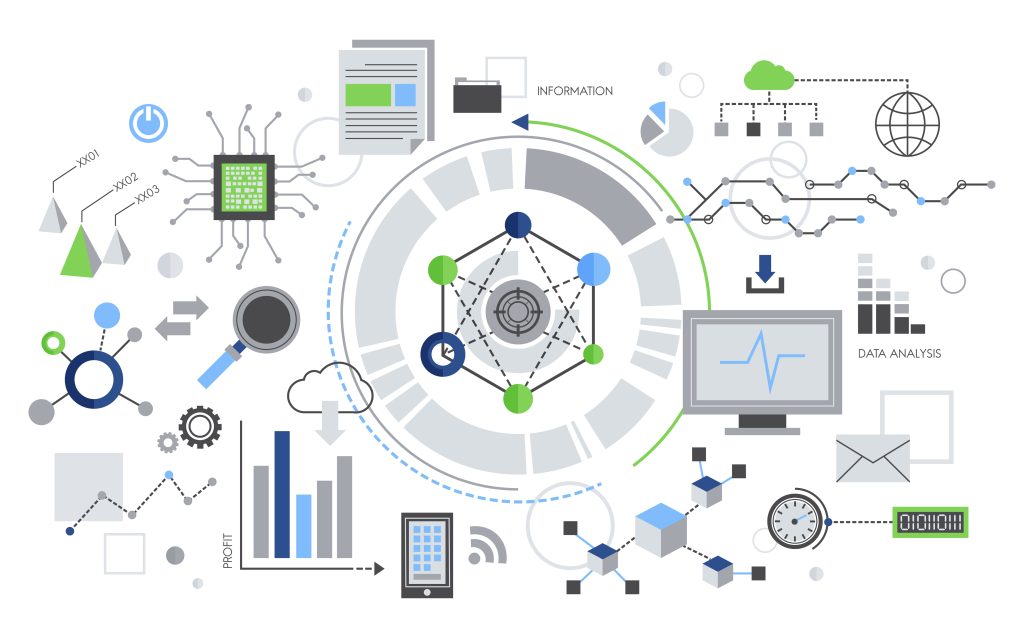In the current business environment, success is driven by data as its language. Decisions built on clear, reliable insights produce outcomes that move organizations forward with confidence. Business analytics is the discipline that turns raw data into these actionable insights, bridging the gap between information and strategy.
What Business Analytics Really Means
Business analytics means applying scientific methods like statistics, data mining, and visualization to collect, process, and interpret data. This process transforms disparate numbers into a structured storyline that reveals how a business operates, where it stands, and where it is heading.
Think of analytics as the business equivalent of a GPS system. Instead of wandering blindly, executives navigate with precision, avoiding costly detours and optimizing their route to achieve goals faster.
Four Pillars of Business Analytics – A Closer Look
1. Descriptive Analytics – Learning From the Past
This analytics category summarizes historical data. It answers, “What happened?” For instance, it reports last quarter’s sales revenue, customer acquisition rates, or product return percentages. These insights establish a factual baseline of performance and operational results.
Descriptive analytics is essential for hindsight. It does not explain causes but provides an objective record, serving as the first step to understanding business dynamics.
2. Diagnostic Analytics – Uncovering the Why
Going beyond the surface, diagnostic analytics investigates causes behind what the data shows. If sales dropped, diagnostic tools explore the underlying reasons, market trends, competitor moves, operational hiccups, or customer behavior changes. It sheds light on correlations and root causes.
This phase is like a magnifying glass revealing the patterns and triggers within the data, empowering leaders to identify problems and opportunities with greater clarity.
3. Predictive Analytics – Foreseeing Trends
The realm of prediction brings future possibilities into focus by analyzing past patterns. Predictive analytics leverages statistical models and machine learning to forecast what might happen next, such as anticipated demand spikes or potential churn rates.
While predictions do not guarantee outcomes, they provide a probability-based forecast. This knowledge arms decision-makers to be proactive, anticipating challenges and capitalizing on emerging trends before competitors do.
4. Prescriptive Analytics – Guiding Smart Action
Prescriptive analytics takes predictive insight a step further. It evaluates options and recommends the best course of action to optimize outcomes. For instance, a retailer could use prescriptive models to strategize inventory levels that balance customer demand with storage costs.
This approach incorporates constraints, risks, and goals, offering data-backed guidance that turns insights into effective strategies.
Step One: Data! Data! Data! The Lifeblood of Business Analytics

Every journey into business analytics begins with data. This foundational asset fuels every insight, every forecast, and every decision. Without accurate, relevant, and rich data, analytics becomes guesswork rather than guidework.
- Why Data Collection Matters
Collecting data is not just about gathering numbers, it’s about capturing the right information with clarity and context. This process shapes the quality of every subsequent analytic step. Businesses that prioritize disciplined data collection gain clear visibility into their operations, customer behaviors, and market dynamics.
How Businesses Should Approach Data Collection
1. Know Your Business Questions
Before collecting data, clarify the specific questions you want to answer. Are you trying to understand sales trends? Customer satisfaction drivers? Operational inefficiencies? Setting clear objectives targets relevant data and avoids information overload.
2. Identify Your Data Sources
Businesses generate data from many places: sales records, customer feedback, website interactions, inventory systems, and even social media. Recognizing which sources hold valuable insights aligned with your goals is critical.
3. Choose the Right Methods
Data collection can take many forms
- Surveys and Questionnaires for structured feedback.
- Transactional Data Tracking for real-time sales, orders, or service usage.
- Interviews and Focus Groups for qualitative insights.
- Observations to monitor behaviors or processes directly.
- Digital Analytics Tools capturing website and app user behavior.
A balanced mix of methods aligned to objectives and resources provides solid coverage.
4. Design Thoughtful Data Collection Tools
Craft clear, concise, and targeted questions or measurement tools to ensure reliable data. Automate where possible using CRM systems, Google Analytics, Excel dashboards, or other software to reduce errors and streamline capture.
5. Ensure Data Quality and Relevance
Prioritize accuracy, completeness, and currency. Regularly review and clean your data by fixing inconsistencies, removing duplicates, and updating outdated records. Quality data underpins trustworthy analysis.
6. Secure and Organize Data Properly
Implement secure storage solutions with proper access controls and backups. Be it cloud databases or local servers; organized data management supports efficient retrieval and integration.
7. Respect Privacy and Ethical Standards
Collect data transparently, obtain consent when required, and follow relevant regulations. Ethical practices protect brand reputation and foster customer trust.
Continuous Improvement: Test and Adapt
Data collection is iterative, not a one-time effort. Regularly evaluate your process and adapt as needs evolve or new technologies emerge.
Why Business Analytics Is Imperative in Today’s Market

Especially in competitive and fast-evolving markets like Nigeria, relying solely on experience or gut feeling puts businesses at risk. The cost of mistakes rises as customers grow more informed and market pressures intensify.
Businesses that embed analytics in decision-making gain early warnings, operational efficiencies, and sustained strategic advantages. Analytics fosters evidence-based management where assumptions give way to facts, and risks are mitigated.
Practical Analytics: Accessible Tools Without Complexity
You do not need sophisticated software or expensive consultants to start. Powerful analytics begins with organized data and clear questions.
Common tools such as Excel, Google Looker Studio, Power BI, and Tableau offer user-friendly dashboards that translate numbers into easily understood visual stories.
The focus remains on disciplined data management, curiosity-driven inquiry, and iterative analysis, not chasing flashy tech but maximizing existing resources.
Start With What You Have

Every business activity, from sales and expenses to employee hours and customer interactions, generates valuable data. This data is an asset waiting to be unlocked.
By fostering curiosity, asking questions, charting trends, and testing assumptions, your data transforms from static records into a dynamic roadmap that guides smarter growth.
You do not have to make decisions in the dark
Whether you are a startup founder, a growing business, or an established organization, business analytics is your competitive edge. But insights only matter when they are structured, interpreted, and applied correctly.
That is where Wells Accounting & Tax Services comes in.
We help businesses
• Make data-driven strategic decisions
• Set up proper financial dashboards and KPIs
• Interpret numbers to drive measurable growth
• Stay proactive, not reactive
Let us turn your data into results.
Call us: +234 817 801 1853
Visit: www.wellsaccountingtax.com
Email: info@wellsaccountingtax.com









No comment